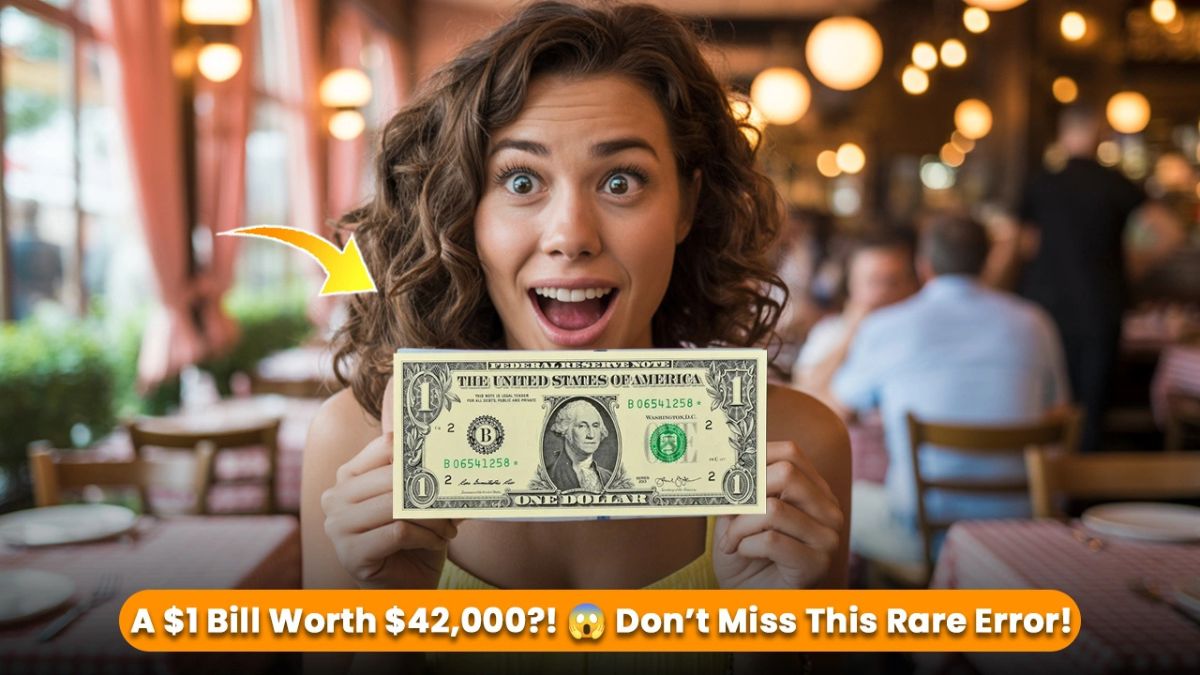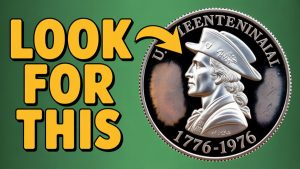When we think of rare and valuable money, we often imagine shiny gold coins or old silver dollars from the 1800s. But in the world of coin and currency collecting — also known as numismatics — even something as common as a $1 bill can turn out to be a hidden treasure.
That’s exactly what happened recently. A regular-looking 2017 $1 bill sold at an auction for an unbelievable $42,000. Yes, you read that right — not $4,200 or $420, but forty-two thousand dollars for a single dollar bill. This surprising sale is now encouraging people across the country to take a second look at the cash in their wallets, hoping they might have a similar hidden gem.
So, what made this ordinary-looking bill so valuable? Let’s break it down in simple terms.
What Makes the 2017 $1 Bill So Special?
At first glance, this $1 bill doesn’t look like anything out of the ordinary. It’s not old, made of gold, or signed by a president. What makes it so valuable is something very specific — a rare printing error known as a “duplicated serial number.”
To understand this better, we first need to know how serial numbers work on money.
Each U.S. bill is printed with a unique serial number. This number acts like an ID to make sure each note can be tracked, recorded, and verified by the Federal Reserve. Normally, no two bills are supposed to have the same number.
But in this case, a mistake happened.
The Big Mistake: Duplicated Serial Numbers
Back in 2014 and 2016, the Bureau of Engraving and Printing (BEP) — the agency that prints U.S. money — accidentally printed two different batches of $1 bills with the same serial numbers. One batch was printed in Washington, D.C., and the other in Fort Worth, Texas.
As a result, around 6.4 million $1 bills from each facility were released into circulation with duplicate serial numbers. This kind of error is extremely rare and wasn’t noticed right away. Most of the bills were used in everyday transactions — bought snacks, paid for gas, or were deposited in banks — without anyone realizing they were part of a printing mistake.
Why Duplicated Serial Numbers Are a Big Deal
In the collecting world, anything that’s rare and unusual usually becomes more valuable. A duplicated serial number is a big deal because it breaks a basic rule of currency — each bill should have its own unique number.
But what’s even more exciting for collectors is finding a matched pair — two $1 bills with the exact same serial number from the two different facilities (Washington and Fort Worth). These matched pairs are incredibly rare because:
- Many of the bills have already been used and destroyed.
- It’s difficult to track them down.
- Finding both matching bills together is almost like winning the lottery.
The $42,000 Jackpot
So how did a $1 bill sell for such a huge amount?
A matched pair of these rare $1 bills recently showed up at an auction. Both bills were in uncirculated condition, which means they were never used in daily life — no folds, no creases, no wear or tear. That made them even more valuable.
The serial numbers matched exactly. Both bills were from the 2017 series, and they were printed at the two different BEP facilities. Because of this, the pair sold for $42,000 through a major auction house.
For something that would normally buy you a bottle of water, this was an incredible return on investment.
Could You Find One in Your Wallet?
You might be thinking, “What are the chances I have something like this?” Well, believe it or not, there’s still a small possibility that some of these bills are out there — sitting in wallets, drawers, old birthday cards, or tucked away in boxes.
Here’s what to look for:
- Series year: Check if your $1 bill is from 2013 or 2017. You can find this printed on the front of the bill near the portrait.
- Serial number: Look closely at the serial number. If it seems unusual, note it down.
- Printing facility: There are two BEP facilities — Washington, D.C., and Fort Worth, Texas. Fort Worth notes usually have a tiny “FW” printed near the top left corner.
- Exact match: Finding one bill is cool, but to hit the jackpot, you need a matching pair — same number, different facility.
Even if you find one half of a matched pair, it could still be worth hundreds or thousands of dollars, depending on condition.
Tips If You Think You Found One
If you think you might have one of these rare $1 bills, here’s what you should do:
- Do not spend it – Set it aside safely in a sleeve or envelope to avoid damage.
- Consult an expert – Reach out to a numismatist (currency expert) or a trusted auction house.
- Get it authenticated – There are professional grading services like PMG (Paper Money Guaranty) or PCGS that can evaluate and certify your bill.
- Avoid scams – The BEP or U.S. Treasury will never ask you for money, passwords, or personal info via email or text. Be cautious and only deal with verified professionals.
Why Paper Money Is Gaining Popularity Again
In today’s digital world where most people use cards, apps, or UPI for payments, you’d think paper money would be fading away. But in the collecting world, interest in physical cash is growing.
Many people — especially younger generations — are exploring this hobby through TikTok, YouTube, and Reddit. Videos showing rare bills and coins often go viral. People are now paying closer attention to details on their money — like unusual serial numbers, printing errors, or “star notes” (bills with a star symbol).
With fewer people using cash, older or unique notes are becoming harder to find, which adds to their value.
Conclusion
The story of the $42,000 $1 bill teaches us an important lesson — sometimes extraordinary value hides in the most ordinary things. You never know when that plain-looking dollar in your back pocket could turn out to be worth a fortune.
It takes just a few seconds to check your bills. Who knows? Maybe you’ve been carrying a rare piece of currency without even knowing it. So before you toss that crumpled dollar into a vending machine, take a closer look. It might just be your lucky break.
FAQs
Q1. Why is the 2017 $1 bill so valuable?
The 2017 $1 bill is valuable due to a rare printing error and a specific serial number combination that makes it highly collectible among currency enthusiasts.
Q2. What kind of error does the rare 2017 $1 bill have?
These bills are part of a “duplicated serial number error” — where two separate batches of bills were printed with the same serial numbers by accident.
Q3. How can I check if I have one of these rare $1 bills?
Look at the serial number and series year. The rare bills are from the 2017B series with serial numbers between B00000001 to B00250000 and B03200001 to B03840000, printed for the Federal Reserve Bank of New York.
Q4. Where can I sell a rare 2017 $1 bill?
You can sell them on platforms like eBay, Heritage Auctions, or through rare currency dealers. Prices can range from hundreds to tens of thousands of dollars depending on the condition.
Q5. Are all 2017 $1 bills valuable?
No, only those with the rare misprint and matching serial numbers hold significant value. Most standard 2017 bills are worth face value.


